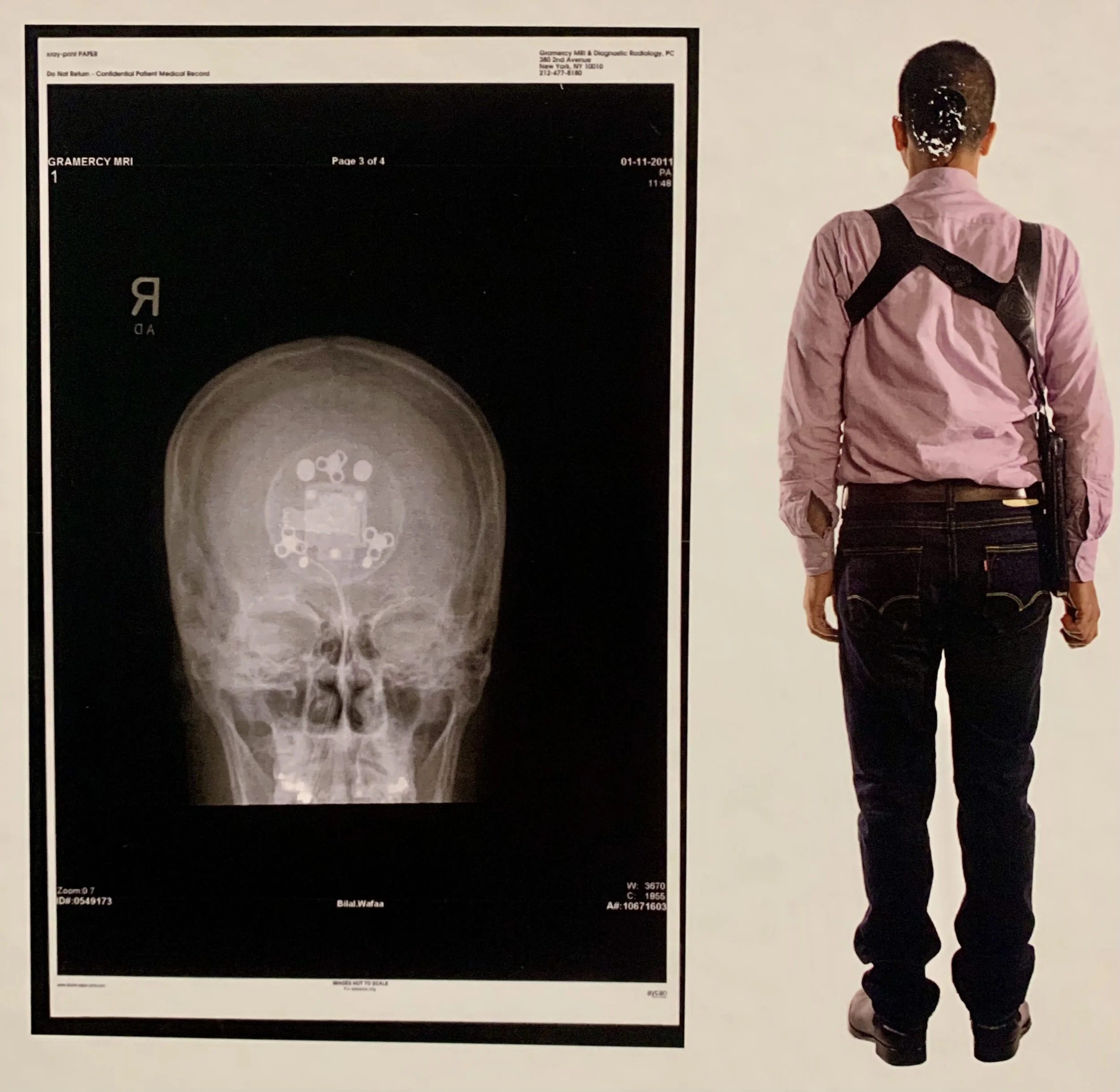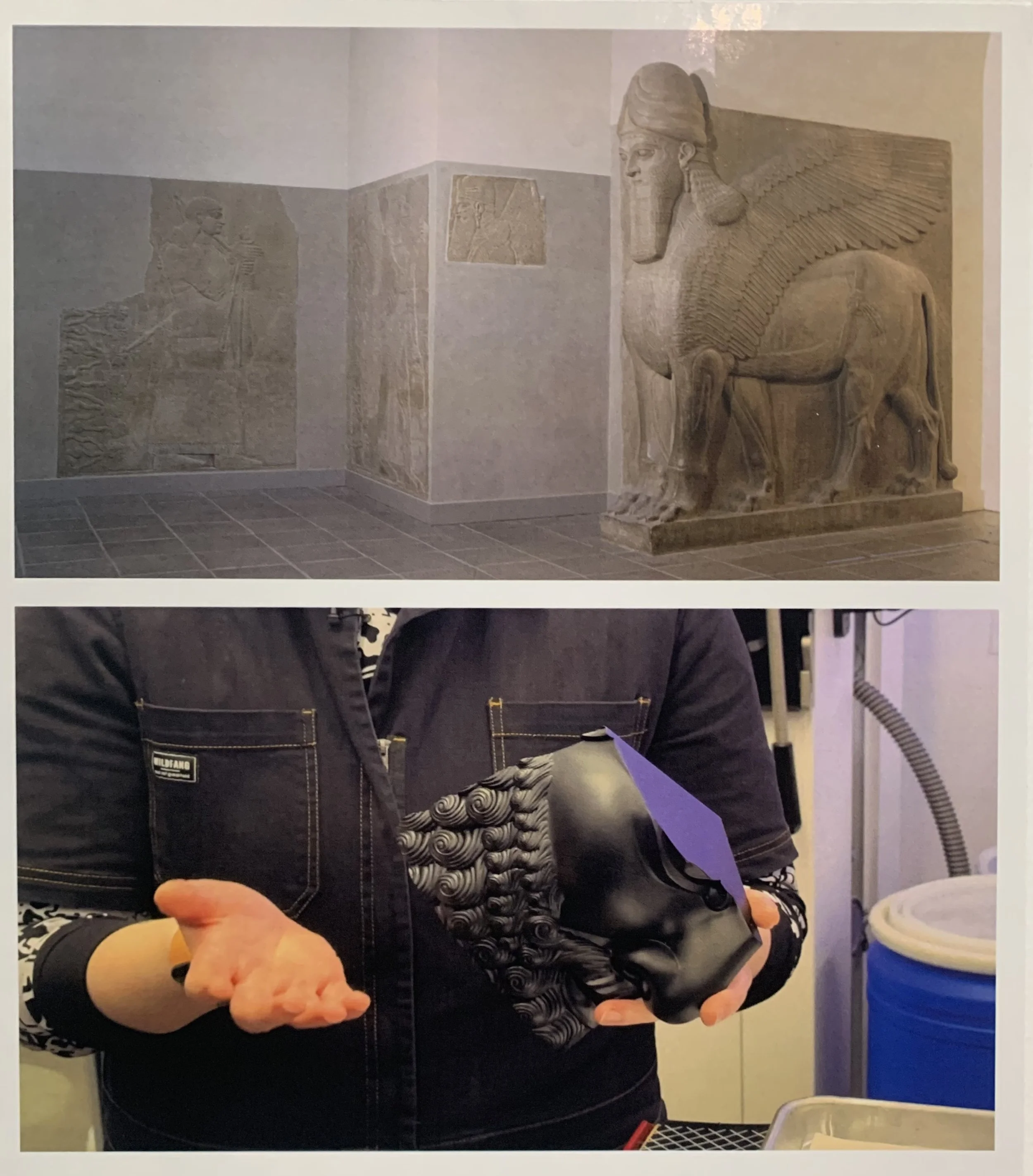Wafaa Bilal: Consume or Be Consumed
Wafaa Bilal’s body of art may not paint a pretty picture, but it presents captivating socio-cultural research that draws from a reality no less unsettling. We examine the symbology, clues, and performances that use the body as a prompt to dissect the human psyche under extreme conditions shaped by contemporary technology and socio-political conflicts.
The exhibition centers on the concept of cultural cannibalism. The term originated in Oswald de Andrade’s “Manifesto Antropófago” (Cannibalist Manifesto) in 1928 (1), during Brazil’s avant-garde movement. The text uses cultural cannibalism as a metaphor for empowerment, showing how Brazil’s absorption of colonial influences can be transformed into something local and resistant. These ideas were further developed in the more contemporary context of globalization, as seen in Néstor García Canclini’s Hybrid Cultures: Strategies for Entering and Leaving Modernity (1995) (2), which examines cultural cannibalism as a method of negotiating identity in Latin America. The term has also been used by Deborah Root in Cannibal Culture: Art, Appropriation, And The Commodification of Difference (3), where it becomes a critique of late capitalism’s consumption of non-Western cultures. Drawing on the multifaceted nature of the concept, Bilal’s exhibition invites the term into the discourse of Iraq’s contemporary cultural panorama.
Domestic Tension (2007) is the documentation of a 30-day performance in which Bilal locked himself in his studio with a paintball gun connected to a computer that could be operated remotely via a website. The work exposes the cognitive dissonance experienced by those operating violent weapons when technology “videogamifies” the act. In the recording, he recalled being unable to sleep for days due to the constant firing of the paintballs and the anxiety of anticipating the next shot. His account conveys the claustrophobia, panic, and helplessness of life in a war zone.
Bibal again subjected his body to physical violence in 2011 by surgically implanting a camera in the back of his head. Continuing his exploration of the tension between the body and technology, the work confronts the violence of surveillance. This “self-cannibalization” evokes mind-squirming phobias and relates to the panic of inescapability seen in Domestic Tension. As the camera periodically takes photos, Bilal highlights the invasiveness of constant tracking and draws attention to the heightened scrutiny Muslims and Arabs have faced post-9/11. The placement of the camera records where he has been, but from behind him–underscoring the lack of control in this experience.
The empowering facet of cultural cannibalism emerges in Bilal’s Lamassu (In a Grain of Wheat) (2025). He proceeds with his dialogue with technology; he uses it to reconstruct, quite literally, priceless cultural heritage lost to ISIS’s campaign of damnatio memoriae. One of the destroyed monuments was the ancient Assyrian colossal sculptures, Lamassu. These works were already violated by the United States in the 19th century when they were looted and placed in the MET. Bilal recreated the work by producing a 3D scan of it, then encoding the digital file into the DNA of a wheat strain. Visitors are encouraged to bow to the 3D printed Lamassu and take a grain from a pile below to “continue consuming Iraqi culture” (4).
This gesture, along with Bilal’s other works, reflects on cultural cannibalism through elements of empowerment resonant with the 20th-century Brazilian discourse, while also engaging with Root’s critique of cultural consumerism. The artist articulates the complex reality of a nation overtaken by a tyrannical power that participates in the destruction of its own culture while simultaneously enduring American imperial aggression. This dual cultural violence is a historically recurring phenomenon, and its layered dynamics leave historical narratives vulnerable to propaganda. Bilal’s work not only confronts cycles of cultural domination but also urges a critical awareness of how such histories are told, consumed, and reimagined.
de Andrade, O. (n.d.). Manifesto Antropófago. Nuevo Texto Crítico, 12(1), 25-31. https://dx.doi.org/10.1353/ntc.1999.0017
García Canclini, N. (1995). Hybrid cultures : strategies for entering and leaving modernity. University of Minnesota Press.
Root, D. (1996). Cannibal culture : art, appropriation, and the commodification of difference. Avalon Publishing.
Bilal, W. MCA display text from the Wafaa Bilal: Indulge Me exhibition Feb 01, 2025 - Oct 19, 2025

